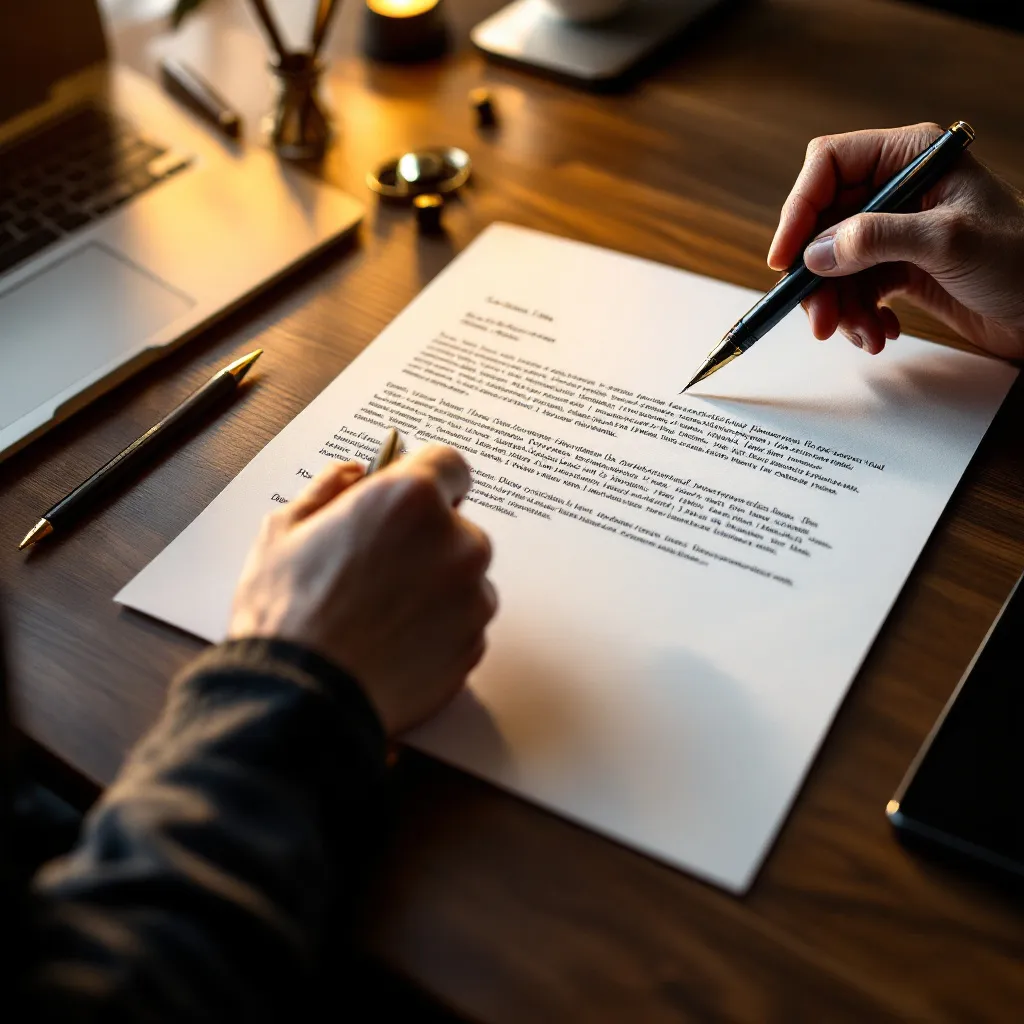In today’s digital world, knowing how to properly format a letter remains an essential skill for job seekers and professionals alike. Whether you’re crafting a cover letter for your dream job or sending a formal business communication, proper formatting creates a positive first impression and demonstrates your attention to detail. This guide will walk you through everything you need to know about professional letter formatting.
Essential Elements of a Properly Formatted Letter
Every well-structured formal letter contains several key components:
-
Return Address/Letterhead: Your contact information appears at the top of the letter. In American formatting, this typically aligns to the top left or center, while British letters often place it in the top right.
-
Date: The date format varies by region:
- American style: Month-Day-Year (April 4, 2025)
- British style: Day-Month-Year (4 April 2025)
-
Recipient’s Address: Include the recipient’s full name, title, company, and mailing address.
-
Salutation: The greeting that opens your letter:
- American business letters use a colon (Dear Ms. Smith:)
- British letters and American informal letters use a comma (Dear Ms. Smith,)
-
Body: The main content of your letter, typically organized into 3-4 paragraphs.
-
Closing: A professional sign-off (Sincerely, Regards, etc.)
-
Signature: Your handwritten or digital signature followed by your typed name.
-
Enclosures (if applicable): Note any additional documents included with your letter.
Step-by-Step Guide to Formatting a Professional Letter
1. Choose the Right Format
The two most common letter formats are:
-
Block Style (American preference): All elements are left-aligned with no paragraph indentation. This format is clean, modern, and widely used in business settings.
-
Indented Style (British preference): The first line of each paragraph is indented, creating a more traditional appearance.
2. Set Up Page Layout
- Use standard 8.5″ x 11″ (US) or A4 (UK/international) paper
- Set 1-inch (2.54 cm) margins on all sides
- Choose a professional, readable font (Times New Roman, Arial, or Calibri)
- Use 11-12pt font size for the body text
3. Format the Header Section
Place your contact information at the top, followed by the date and recipient’s address. Leave one line space between these elements.
4. Craft an Appropriate Salutation
When addressing someone specific:
Dear Mr./Ms./Dr. [Last Name]: (American business)
Dear Mr./Ms./Dr. [Last Name], (British or American informal)
When recipient is unknown:
Dear Hiring Manager: (American business)
Dear Sir/Madam, (British formal)
5. Structure the Body Paragraphs
- Single-space within paragraphs
- Double-space between paragraphs
- Keep paragraphs concise and focused (3-5 sentences)
- Maintain a professional tone throughout
6. Add a Professional Closing
American business letter:
Sincerely,
[Your signature]
[Your typed name]
British formal letter:
Yours faithfully, (when recipient name is unknown)
Yours sincerely, (when addressing by name)
[Your signature]
[Your typed name]
Digital vs. Print Letter Formatting Considerations
When creating letters for digital delivery:
- Save as PDF to preserve formatting across devices
- Use a digital signature or type “/s/” before your name if a handwritten signature isn’t possible
- Maintain the same formatting structure as print letters
- Consider creating a digital letterhead with clickable contact information
For email attachments, the ai letter writer free can help ensure your formatting remains professional when converting to different file formats.
Common Letter Formatting Mistakes to Avoid
-
Inconsistent date formats: Stick to either American (April 4, 2025) or British (4 April 2025) style throughout.
-
Incorrect salutation punctuation: Don’t mix American business (colon) and British/informal (comma) conventions.
-
Mismatched formatting: Maintain consistent alignment, spacing, and indentation throughout.
-
Overly casual language: Phrases like “Hey team” are inappropriate in formal correspondence, especially in British contexts.
-
Cramped spacing: Don’t compress your letter to fit on one page—use appropriate spacing for readability.
When applying for jobs, avoid these mistakes by using an ai email for job application tool to ensure your communication follows proper conventions.
Letter Format Templates for Different Purposes
American Business Letter (Block Style)
Your Name
Your Address
City, State ZIP Code
Your Email/Phone
Date: April 4, 2025
Recipient's Name
Title
Company
Address
City, State ZIP Code
Dear Ms. Smith:
[Body paragraph 1: Introduction and purpose of the letter]
[Body paragraph 2: Details and supporting information]
[Body paragraph 3: Action request or conclusion]
Sincerely,
[Your Signature]
[Your Name]
British Formal Letter (Indented Style)
Your Address
City, Postcode
Your Email/Phone
4 April 2025
Recipient's Name
Title
Company
Address
City, Postcode
Dear Sir/Madam,
[Body paragraph 1: Introduction and purpose of the letter with first line indented]
[Body paragraph 2: Details and supporting information with first line indented]
[Body paragraph 3: Action request or conclusion with first line indented]
Yours faithfully,
[Your Signature]
[Your Name]
For job seekers, ResuFit‘s tools can help generate professional letters perfectly formatted for your specific application needs.
Digital Tools and Resources for Perfect Letter Formatting
-
Word Processing Templates: Microsoft Word and Google Docs offer pre-formatted letter templates that follow professional standards.
-
Grammar and Style Checkers: Tools like Grammarly can adjust spelling and punctuation for American or British English conventions.
-
Digital Signature Solutions: Services like DocuSign or Adobe Sign allow for professional electronic signatures.
-
AI Writing Assistants: ResuFit‘s ai writing generator free can help craft properly formatted correspondence with appropriate language for your context.
-
Cover Letter Generators: When applying for jobs, a specialized cover letter generator can ensure your application follows industry-standard formatting while tailoring content to specific positions.
For more specialized applications, consider resources like portfolio cover letter guides or ai prompts to use when writing a cover letter to enhance your professional correspondence.
Conclusion
Mastering letter formatting is a valuable professional skill that enhances your credibility and effectiveness in written communication. Whether you’re following American or British conventions, the key is consistency and attention to detail. For job seekers, proper letter formatting combined with well-crafted content can significantly improve your application success rate.
For automated assistance with formatting and generating professional correspondence, ResuFit‘s suite of tools, including their ai job application bot, can streamline your process while maintaining the highest professional standards.

